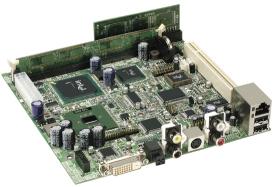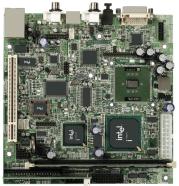New Intel set-top box reference design runs Linux
Sep 23, 2003 — by LinuxDevices Staff — from the LinuxDevices Archive — 18 views Intel introduced a digital set-top box (STB) reference design at last week's Intel Developer Forum in San Jose, CA. The 815 Digital Set Top Box Reference Design is based on an Intel low-voltage Celeron processor along with the Intel 815 chipset with integrated 3D graphics, and supports embedded Linux operating systems.
Intel introduced a digital set-top box (STB) reference design at last week's Intel Developer Forum in San Jose, CA. The 815 Digital Set Top Box Reference Design is based on an Intel low-voltage Celeron processor along with the Intel 815 chipset with integrated 3D graphics, and supports embedded Linux operating systems.
Intel says the STB reference design enables low-cost solutions delivering IP-based video-on-demand and allows service providers to add capabilities such as voice over IP and residential gateway/access functions. The design is also said to be suitable for applications such as networked digital media recorders and personal video recorders.
The design is based on a compact (6.7 x 6.7 in.) single-board computer which includes the following features . . .
- Low Voltage or Ultra Low Voltage Intel Celeron processor — up to 866MHz CPU clock rate
- 168-pin DIMM memory slot for 64 to 512MB of SDRAM
- TV output: composite video, S-Video, DVI display port, NTSC, PAL, Component video (option)
- Audio: left/right output, SPDIF, RCA and Toslink
- 10/100 Mbps Ethernet port (on RJ45)
- Two USB 1.1 ports on external inteface connectors; two additional USB 1.1 ports on internal header connectors
- Infrared receiver for remote control or keyboard
- Two optional Mini-PCI module connectors (on back of board)
- Optional low-profile PCI expansion slot
- Two IDE drive interfaces
- DVD-ROM (IPV500 only): standard full size; DVD R/W optional.
Here are photos of the STB single-board computer (click each to enlarge) . . .


A block diagram showing the functions that are on the board is available here.
This article was originally published on LinuxDevices.com and has been donated to the open source community by QuinStreet Inc. Please visit LinuxToday.com for up-to-date news and articles about Linux and open source.